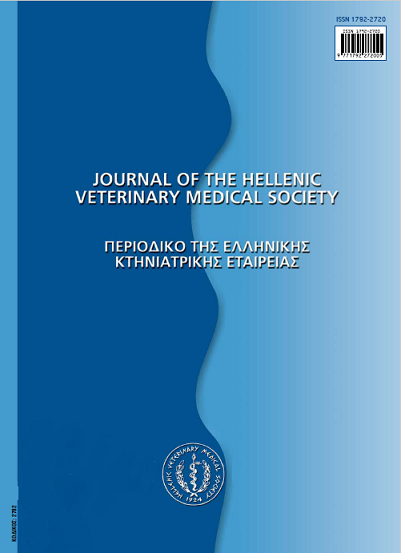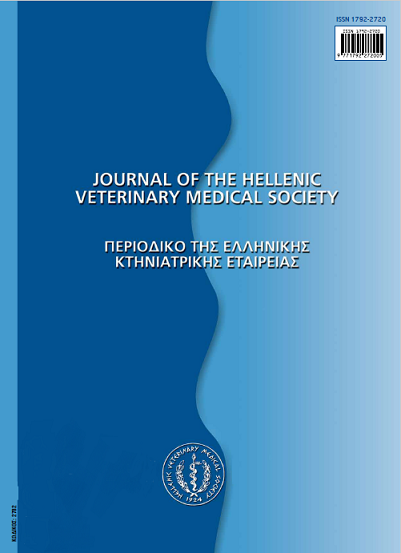D-dimer as a diagnostic tool for canine thromboembolic disorders
Resumen
D-dimers are small protein fragments present in the blood after a blood clot is degraded by plasmin. During the fibrin(ogen) degradation, a number of products are produced called fibrin(ogen) degradation products (FDPs). D-dimers are part of the FDPs, formed as a result of plasmin activity on cross-linked fibrin. Thus, D-dimers indicate the activity of both thrombin and plasmin and are specific markers for fibrinolysis. D-dimer measurement is widely used in the diagnostic work-up of human patients as the most sensitive test to diagnose pulmonary thromboembolism (PTE) and disseminated intravascular coagulation (DIC) and it is, also, considered essential in the evaluation of antithrombotic therapy. During the last decade, there was considerable research regarding the potential utility of D-dimer in veterinary medicine, particularly in canine and equine species. In dogs, D-dimer plasma concentrations can be used to rapidly detect the thrombotic complications and DIC associated with many systemic diseases (high quantitative D-dimer levels). The symptoms of PTE are subtle and the confirmation of diagnosis with routine hematological tests can be difficult, thus jeopardizing the patient's survival. Several techniques have been employed for the detection of D-dimer; the immunoenzymatic assay (ELISA), the immuno-turbidimetric assay and several latex agglutination assays are more commonly used.
Article Details
- Cómo citar
-
GIANNOULOPOULOS (Γ.Δ. ΓΙΑΝΝΟΥΛΟΠΟΥΛΟΣ) G. D., ATHANASIOU (Λ.Β. ΑΘΑΝΑΣΙΟΥ) L. V., & POLIZOPOULOU (Ζ.Σ. ΠΟΛΥΖΟΠΟΥΛΟΥ) Z. S. (2017). D-dimer as a diagnostic tool for canine thromboembolic disorders. Journal of the Hellenic Veterinary Medical Society, 61(1), 49–56. https://doi.org/10.12681/jhvms.14876
- Número
- Vol. 61 Núm. 1 (2010)
- Sección
- Review Articles
Authors who publish with this journal agree to the following terms:
· Authors retain copyright and grant the journal right of first publication with the work simultaneously licensed under a Creative Commons Attribution Non-Commercial License that allows others to share the work with an acknowledgement of the work's authorship and initial publication in this journal.
· Authors are able to enter into separate, additional contractual arrangements for the non-exclusive distribution of the journal's published version of the work (e.g. post it to an institutional repository or publish it in a book), with an acknowledgement of its initial publication in this journal.
· Authors are permitted and encouraged to post their work online (preferably in institutional repositories or on their website) prior to and during the submission process, as it can lead to productive exchanges, as well as earlier and greater citation of published work.












